Korea's top culture stories of 2019: A look back at why galbi-flavored fried chicken, Bong Joon-ho and, of course, BTS dominated the headlines this year
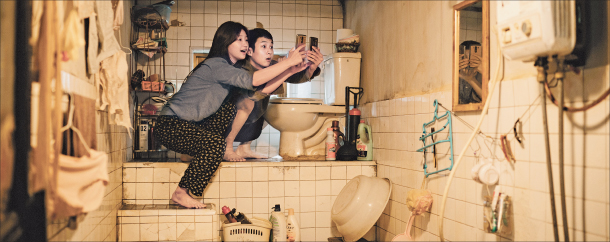
Shortlisted for the Best International Feature Film Oscar, acclaimed movie “Parasite” from director Bong Joon-ho received endless accolades over the year for his intuitive and humorous depiction of social issues related to the widening gap between the rich and the poor. Above is a scene from the film. Actors Park So-dam, left, and Choi Woo-shik portrayed siblings Ki-jung and Ki-woo. [AFP/YONHAP]
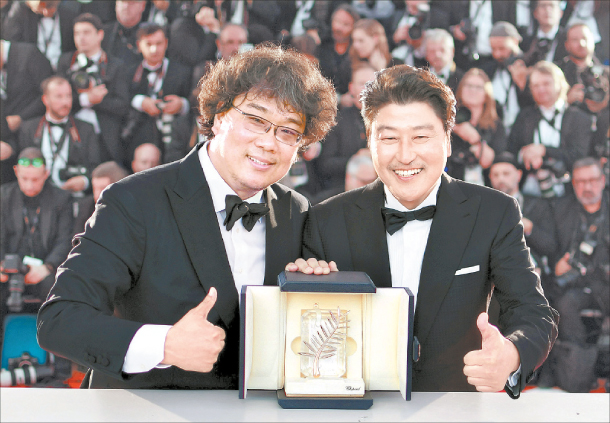
[CJ ENTERTAINMENT]
The centennial of the birth of Korean cinema was celebrated in high spirits this year when director Bong Joon-ho’s “Parasite” won the Palme d’Or at the 72nd Cannes Film Festival in May.
The moment when Bong raised his fist into the air with the iconic golden trophy in his other hand will forever be remembered as one of the most significant moments in Korean cinematic history.
The winning of such a prestigious film award marks an incredible achievement for the local film industry, although it has been inching closer to the possibility of taking home the top prize since director Park Chan-wook took the Grand Prix award at Cannes in 2004 for his film “Oldboy.”
"Parasite" also easily surpassed the 10-million-ticket-sales milestone at the local box office, boosted by the praise the film received from international audiences at the film fest.
Swept up in the wave of laurels, the film’s distribution rights were sold to more than 200 nations, setting another record along the way. In the United States, the film made more than $20 million in ticket sales, becoming the highest-grossing Korean film ever at the North American box office.
After its successful debut both locally and abroad, the director was busy throughout the year promoting the film making appearances at major film fests around the globe. Bong even appeared on the U.S. late night talk show “The Tonight Show Starring Jimmy Fallon" earlier this month.
Meanwhile, excitement over to the possibility of the film winning the first Oscar for a local film grew even more when the black comedy was shortlisted for Best International Feature Film at the upcoming Academy Awards on Dec. 16.
The final five nominees will be announced on Jan. 13, and the award ceremony will be held at the Dolby Theatre in Los Angles on Feb. 9.
The film points out the growing gap between social classes represented by two families - one rich and the other poor. With Bong’s distinct sense of humor, the film has been praised for its portrayal of the ever-sensitive social issue of wealth disparity.
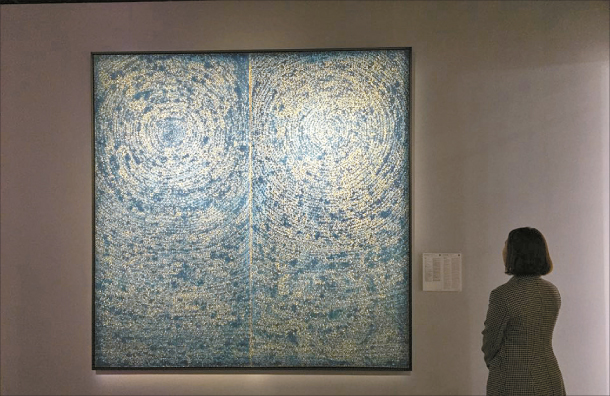
[YONHAP]
Korea saw its first piece of art sell for more than $10 million at auction in November, when a diptych by Kim Whanki (1913-1974) was sold for 88 million Hong Kong dollars ($11.2 million) during a Christie’s Hong Kong sale on Nov. 23, the highest price ever paid for any Korean artwork.
While Kim left all of his works titled in a simple number series, “05-IV-71 #200” (1971) was said to have been dubbed “Universe” by the artist himself and was the only diptych - a two-canvas-piece work - created by the artist in his career.
“Universe” is considered to be a piece that is the most representative of Kim’s artistic world and philosophy but had not been put up for auction because Kim’s close friend Matthew Kim bought the painting from the artist himself. Kim Whanki is considered to be one of the greatest artists of 20th century Korean art, and he is known for venturing into the realm of two-dimensionality and opening up the contemporary art era with his abstract paintings.
Matthew Kim and Chae Kum Kim bought the work after it was completed, and it had since been privately owned by the couple for over 50 years and displayed at the Whanki Museum in central Seoul. “Universe” was sold to an anonymous bidder represented by Francis Belin, president of Christie’s Asia, for two times higher than the starting price, which was set at 40 million Hong Kong dollars.
“To have a work that is traded at above 10 billion won [$8.5 million] means that Kim Whanki’s works have now entered the mainstream international market,” said Lee Jun, general manager of Christie’s Korea. “It will also help the next generation of artists’ entrance into the global art market.”
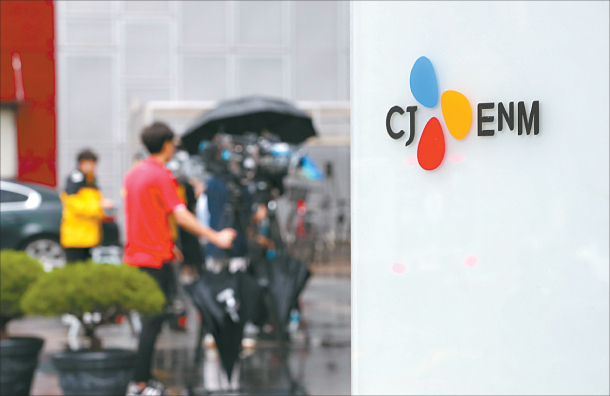
[YONHAP]
Starting in 2016, cable channel Mnet's "Produce 101" audition series took K-pop by storm, opening up a new dimension in the world of audition programs by introducing a program where the public got to choose who gets to debut as part of a K-pop group.
Resulting in project bands I.O.I, Wanna One, IZ*ONE and X1, the "Produce" franchise was undoubtedly one of the most popular programs on TV, enjoyed by viewers of all ages.
Yet, eager fans of the fourth season, "Produce X 101," which aired over the summer, figured out that the voting results for the show's final round looked fishy: The voting tallies reported by the program showed number patterns that were "mathematically improbable" according to experts, while some of the show's fan favorites failed to make it to the final group.
At first, when the show's dedicated fans took matters into their own hands and reported the show's production staff to the prosecution, some criticized them and said that they were being overly fussy.
A few months later, on Dec. 3, producers Kim Yong-bum and Ahn Joon-young of Mnet were indicted with detention for rigging votes on the final rounds of not only the fourth season, but all four seasons of the "Produce" series.
CEO Heo Min-heoi of CJ ENM gave an official apology on Monday and said the company will use all profits from the series to compensate victims.
Although the scandal does not put an end to the K-pop industry or audition programs as a whole, it may be a while for the public to rebuild trust with the television music audition show format and Mnet.
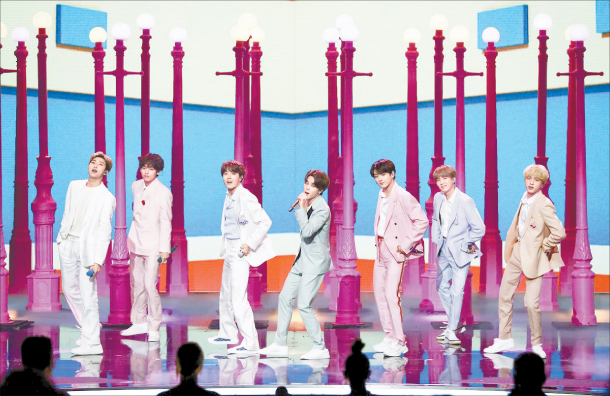
[YONHAP]
K-pop sensation BTS made history again, and again and again this year.
The boy band was ranked No. 15 on the Top Artists chart, No. 2 on the Top Artists - Duo/Group chart and No. 1 on the Social 50 Artists chart on Billboard’s year-end chart tallies.
At the annual Billboard Music Awards in May, the boy band was awarded Top Duo/Group for the first time and was given the Top Social Artist award for the third year in a row.
The double win came after the success of the group’s 2018 EPs "Love Yourself: Tear" and "Love Yourself: Answer" that topped not only local music charts but charts abroad as well, including on Billboard.
The group's album “Map of the Soul: Persona” was released in May and remained in the top 10 of the Billboard main album chart for four consecutive weeks. By August, the album was the third-longest charting K-pop album ever in the United States.
The album also became the most-sold album in Korean history, after it had sold more than 3.2 million copies in May, according to Gaon Chart, Korea’s biggest album sales tracker.
BTS's 2018 EP “Love Yourself: Answer” also broke records by becoming the first K-pop album to spend a year on the Billboard 200 chart.
The boy band also collaborated with big-name pop stars this year. In July, RM appeared on a remix of rapper Lil Nas X's hit song "Old Town Road," and in December, singer Halsey released her album, “Manic,” with a track that featured Suga.
The group finished off its “Love Yourself: Speak Yourself” world tour with a final leg in Seoul in October that drew a total of 130,000 fans.

[YONHAP]
K-pop fans around the world were shocked to hear about the sudden deaths of Sulli and Koo Ha-ra, who both started their careers as singers and later became popular actors.
Sulli, whose real name is Choi Jin-ri, was found dead by police at her home in Seongnam, Gyeonggi, on Oct. 14. She left a note, whose contents were not revealed by the police, but MBC at the time reported that Sulli spoke of “suffering” and depression in her note.
Sulli’s manager had called the police earlier after he could not reach her for hours. Her autopsy results showed no signs of foul play or drug use, and police concluded that she took her own life. She was just 25.
After her death, netizens began connecting negative comments posted online about Sulli and her allegedly longtime struggles with depression.
“This is not the first time that a star took their own life because of these negative and abusive comments about them posted online,” wrote one user in an online community in Naver on Oct. 14.
Koo, a close friend of Sulli's, was found dead at her home on Nov. 24. The police found a handwritten note on a table in the living room of her home in Cheongdam-dong, southern Seoul, and there was no evidence of foul play.
Koo, 28, had attempted suicide earlier in the year. She was rushed to a hospital on May 26 after attempting suicide at home. She had avoided the public eye for a while at the time since she was embroiled in a scandal in 2018 when Koo was accused of assaulting him. It was later revealed that her former boyfriend allegedly threatened to blackmail her.
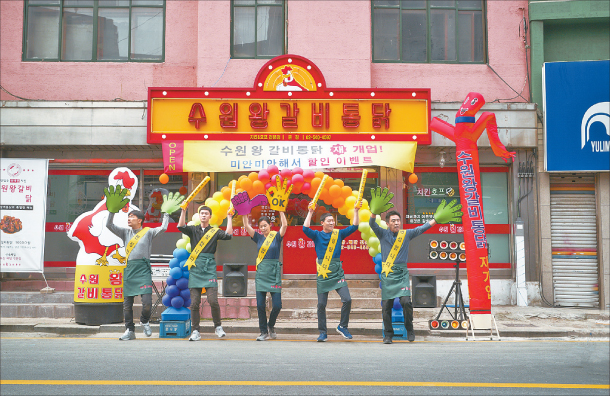
[CJ ENTERTAINMENT]
Comedy “Extreme Job,” released in January, became a sensation soon after its release not only because of its ticket sales but also for encouraging local restaurants to release new dishes inspired by the movie.
The film became the second-highest-selling movie in Korean history, coming in just behind No. 1 “The Admiral: Roaring Currents” released in 2014. “Extreme Job” attracted a little over 16 million people to theaters while the historic film “The Admiral: Roaring Currents” sold about 17.6 million tickets.
The movie is about a police drug squad that opens up a fried chicken restaurant as a front to spy on a group of suspected criminals in the office across the street.
Yet the sluggish fried chicken restaurant they decided to take over unexpectedly becomes popular, thanks to the delicious fried chicken that went viral through many different channels.
The hot item that the restaurant sold was galbi-flavored fried chicken. Galbi is a term to indicate marinated Korean beef barbecue. The characters in the movie named their restaurant Suwon Wang Galbi Tongdak, which translates to galbi-flavored large fried chicken from Suwon.
The city located about an hour outside of Seoul suddenly became a hot spot as people from all over wanted to see if the flavor from the movie was available to try for themselves.
One restaurant called Nammun Tongdak which used to sell a similar style of fried chicken instantly decided to put the item back on the menu and started to see people lining up for a taste. Fried chicken franchises across the country saw a boost in the sales of their barbecue-flavored fried chicken, all thanks to the film.

[YONHAP]
Due to the aggravated relationship between Korea and Japan in 2019, many Koreans have become shy about purchasing Japanese products or taking trips to the neighboring country.
Even those who did venture to Japan over the year shied away from sharing their travel details on social media. Other destinations in Southeast Asia or China became popular vacation hot spots throughout the year, according to local travel agencies.
The consumption of Japanese beer and whisky fell dramatically, and even some Japanese cuisine restaurants have suffered as customers try to stay away from enjoying anything Japanese.
While the general public has stayed away from economically supporting Japan or Japanese culture in any way, some artists from the two countries have stepped up to maintain cultural relations.
At the Aichi Triennale, one of Japan's top art events, the Statue of Peace by Korean artists Kim Seo-kyung and Kim Eun-sung was put on display. The statue, which symbolizes the Korean women forced into sexual slavery for Japanese soldiers during World War II, is of a girl with short hair and wearing hanbok, traditional Korean-style clothing.
Since the statue touches upon history that is still a hot political issue between the two countries, the exhibit was halted due to fierce protests and threats from some Japanese.
After many artists protested the decision of the triennale organizers, the art festival decided to put the statue back on display about a week before the entire event wrapped up in October.
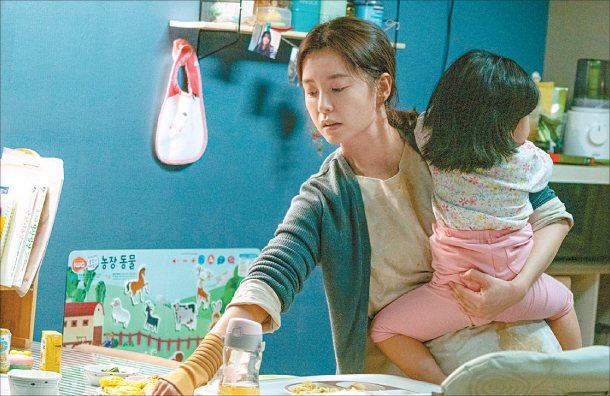
[LOTTE ENTERTAINMENT]
If 2018 was all about the book, 2019 was all about the film.
The best-selling book “Kim Ji Young, Born in 1982” by Cho Nam-joo, which sparked conversations about feminism across the country through the tale of Kim Ji-young, was brought to the big screen in October.
News of the film reignited backlash from groups unhappy about the story's feminist message.
When the news broke that actors Jung Yu-mi and Gong Yu would be portraying the lead roles, they each faced a flood of hateful comments online before even stepping foot onto the set.
Despite the controversy, the film sold over 3.6 million ticket at the local box office. The plot of the film and the original novel were similar, but the film took a softer approach to gender issues to gain sympathy from a wide audience.
The film sold its distribution rights to 37 regions worldwide shortly after the release of the film in local theaters.
The novel has done well overseas as well. While the book specifically touches on discrimination that Korean women face, it seems to have struck a chord with international readers as well. Translated versions of the book have become best-sellers in East Asian countries such as China, Japan and Taiwan.
According to the novel’s publishing company Mineumsa, there was even tough competition between various publishing companies in Britain to acquire the book’s publication rights.
The novel is scheduled to be published in both the United States and Britain next February.
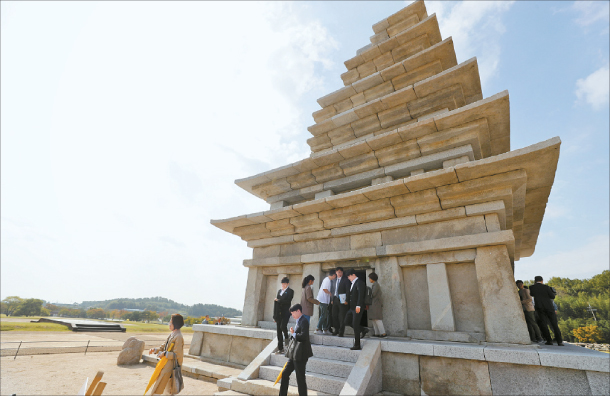
[YONHAP]
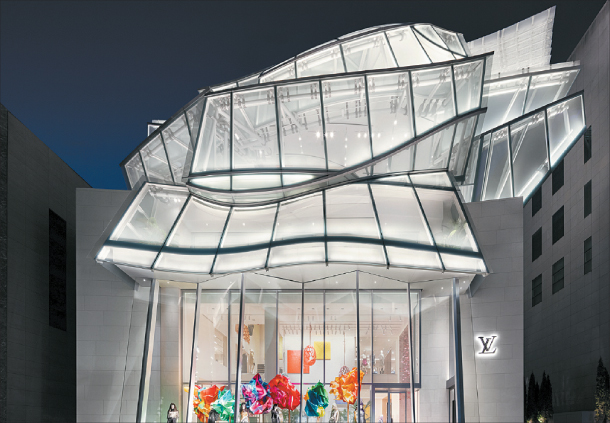
[LOUIS VUITTON MAISON SEOUL]
In May, Korea’s oldest and largest stone pagoda inside the Mireuk Temple in Iksan, North Jeolla, was finally unveiled to the public after two decades of restoration work.
Built in 639, this six-tiered granite tower is designated as National Treasure No. 11. It represents the pinnacle of architecture of the Baekjae Kingdom (18 B.C.-660 A.D.), exemplifying the religious architectural transition from wooden pagodas to stone edifices.
The 1,300-year-old pagoda had to undergo a long restoration process after a part of it collapsed, was plastered with concrete during Japanese colonial rule and deteriorated over the centuries.
The pagoda was installed as a site to worship and pray for the royal family during the reign of King Mu (600-641).
Now it remains the oldest and largest Buddhist stone pagoda in the country, standing 14.5 meters (48 feet) in height and measuring 12.5 meters wide. It weighs about 1,830 tons.
In 1998, the state-run Cultural Properties Committee decided to dismantle the pagoda and reassemble the historic structure after finding that the pagoda was "structurally unstable" in a safety test. The restoration work began in 2001.
The restoration process had also been heavily disputed from the start, probably due to the pagoda's historical significance. The Board of Audit argued that the Cultural Heritage Administration, which is responsible for the restoration work, failed to communicate properly when there were changes carried out regarding the use of materials to create the pagoda. The entire Mireuk Temple site is included on the Unesco World Heritage list.
Architectural stars shine across the country
Some may say that Korea, despite its status on the global stage, doesn't house as many admirable buildings designed by world renowned architects as it should. But it's getting there. In October, Korea’s first Frank Gehry-designed building was introduced - the Louis Vuitton flagship store in southern Seoul’s luxury neighborhood of Cheongdam-dong.
Korea is now home to at least a dozen structures designed by winners of the Pritzker Architecture Prize, widely regarded as the “Nobel Prize of architecture."
Gehry is a Canadian-born American architect, who is one of the biggest names in contemporary architecture. Most people will be familiar with his work at the Guggenheim Museum in Bilbao, Spain, the Walt Disney Concert Hall in Los Angeles and the Louis Vuitton Foundation in Paris.
For the Louis Vuitton Maison Seoul, Gehry chose to present a lofty glass building that creates the illusion of waves gently crashing against the shore, similar to the Louis Vuitton Foundation in Paris.
The 90-year-old architect said he was also inspired by the Unesco World Heritage-designated Hwaseong Fortress in Suwon, Gyeonggi, and the dongraehak dance, which imitates the graceful movements of cranes. Those were what impressed him the most when he first visited Korea about 25 years ago.
Along with Gehry's building, Korea now has a handful of landmarks that come from the minds of award-winning architects including the Seamarq Hotel in Gangneung, Gangwon, designed by Richard Meier in 2015; the Jaeneung Culture Center in Jongno District, central Seoul, designed by Ando Tadao in 2015; the Mimesis Art Museum in Paju, Gyeonggi, designed by Alvaro Siza in 2009; the Dongdaemun Design Plaza in Jung District, central Seoul, by Zaha Hadid in 2014; and the Leeum Samsung Museum of Art in Yongsan District, central Seoul, by Rem Koolhaas, Mario Botta and Jean Nouvel in 2004, among others.
Others are on their way too, including the SongEun ArtSpace and Samtan HQ by Swiss architecture firm Herzog & de Meuron and the 72-story commercial and office complex Yeouido Parc 1 by British architect Richard Rogers.
BY CULTURE DESK [estyle@joongang.co.kr]










with the Korea JoongAng Daily
To write comments, please log in to one of the accounts.
Standards Board Policy (0/250자)